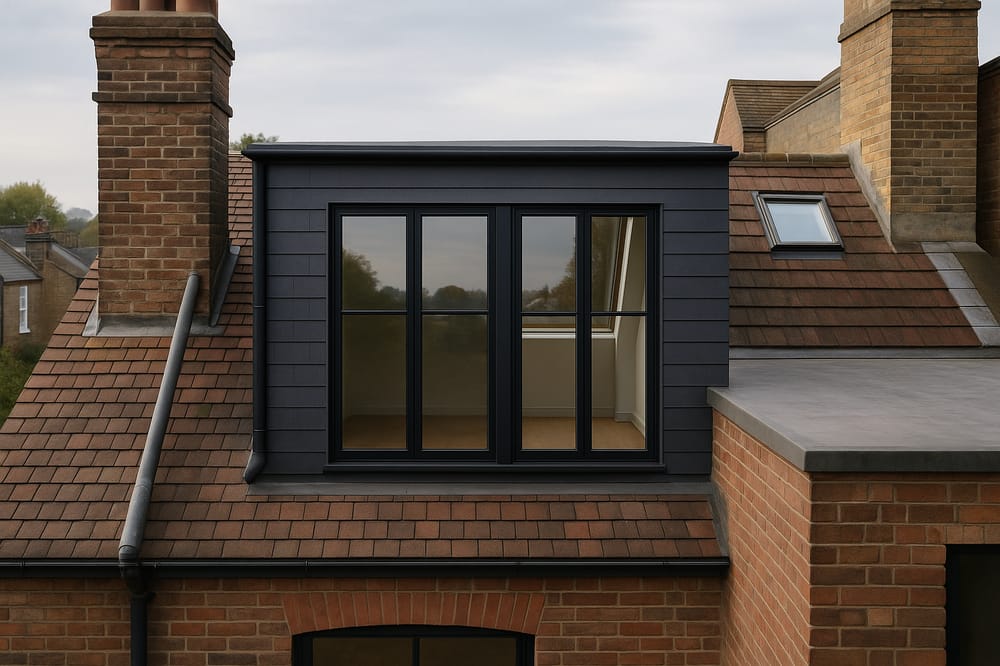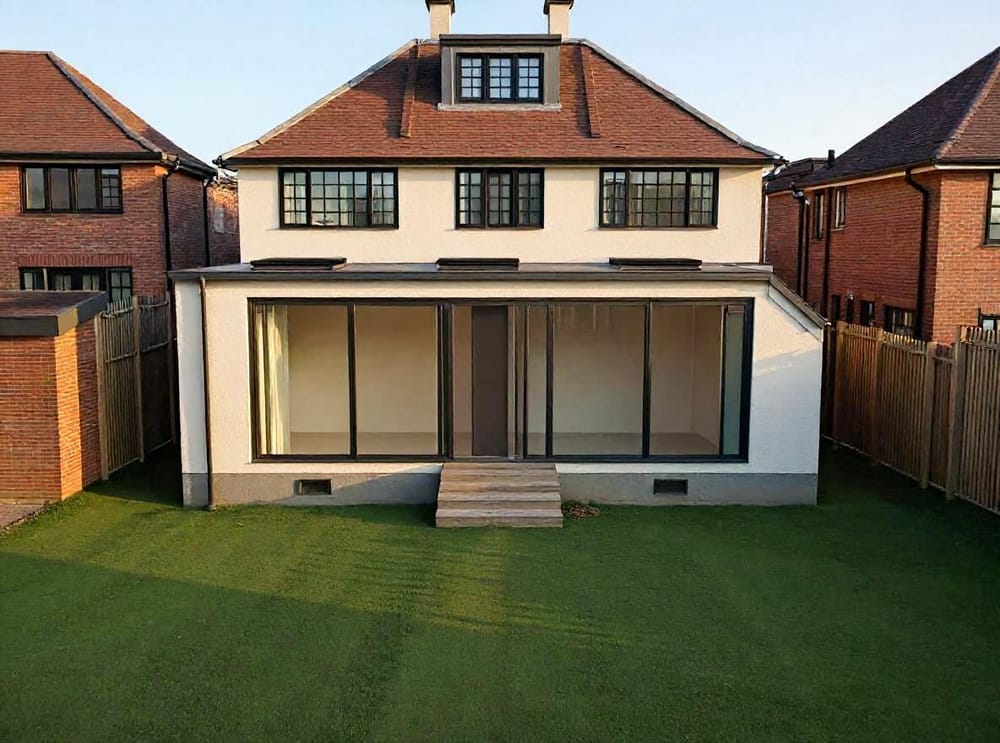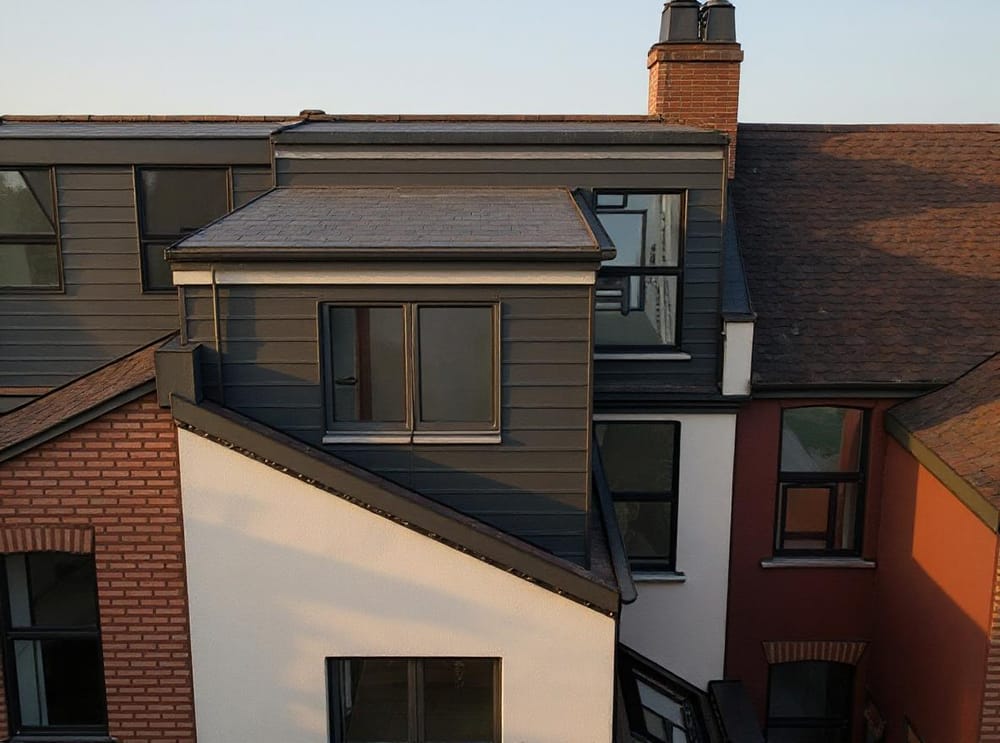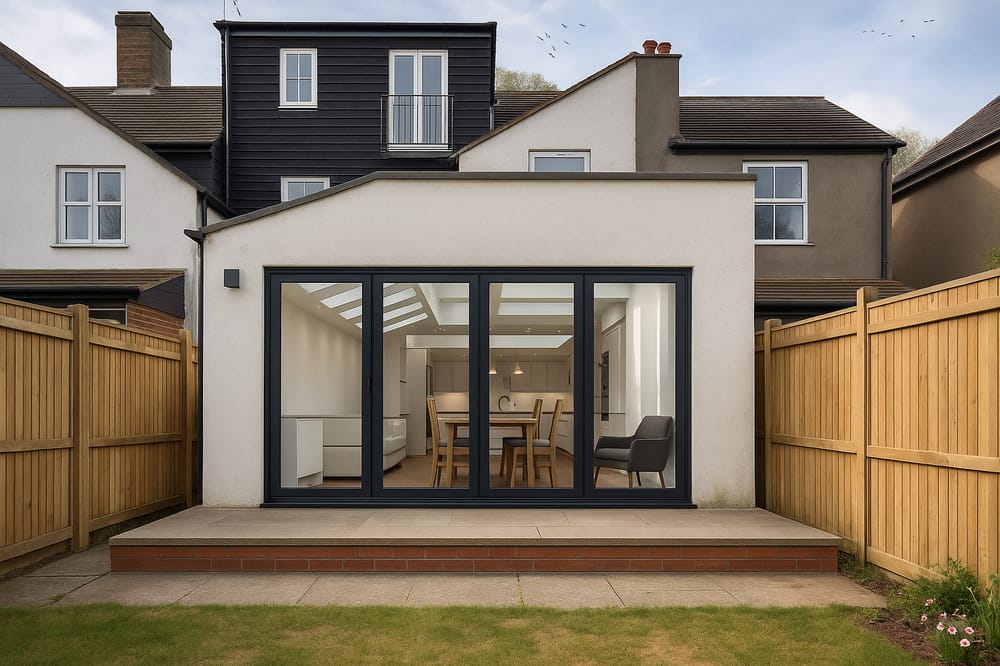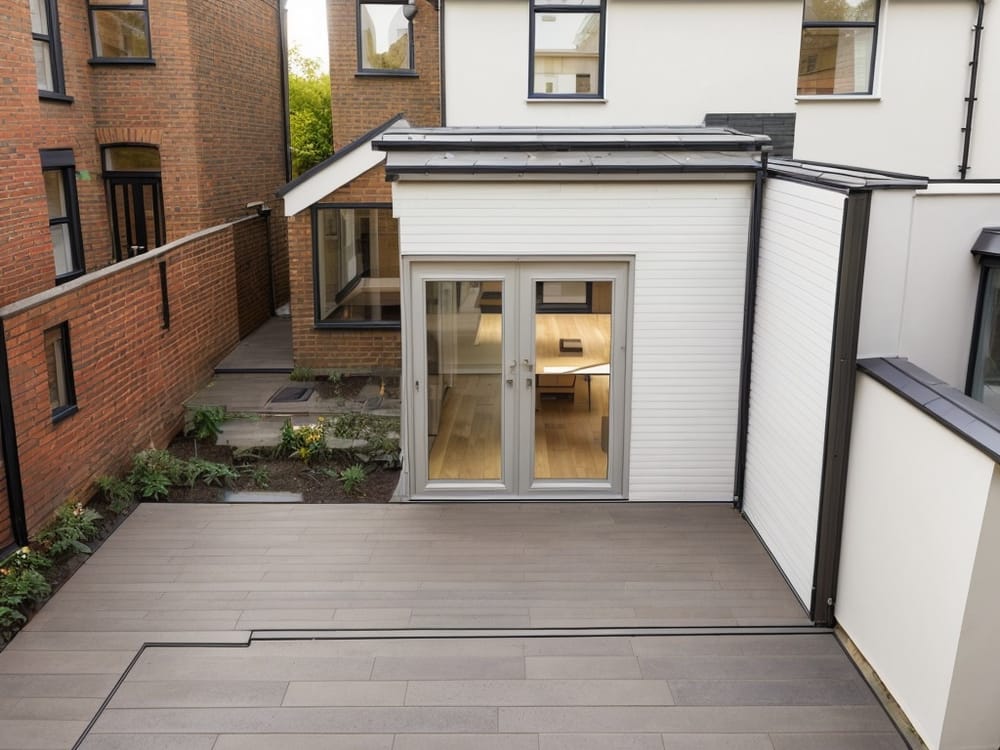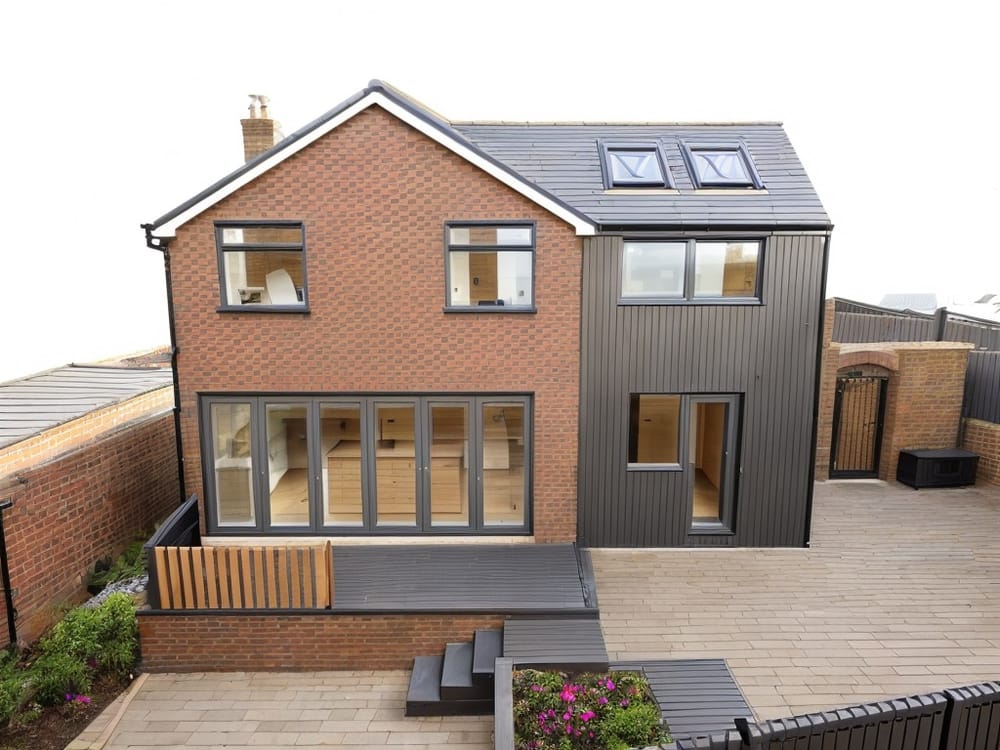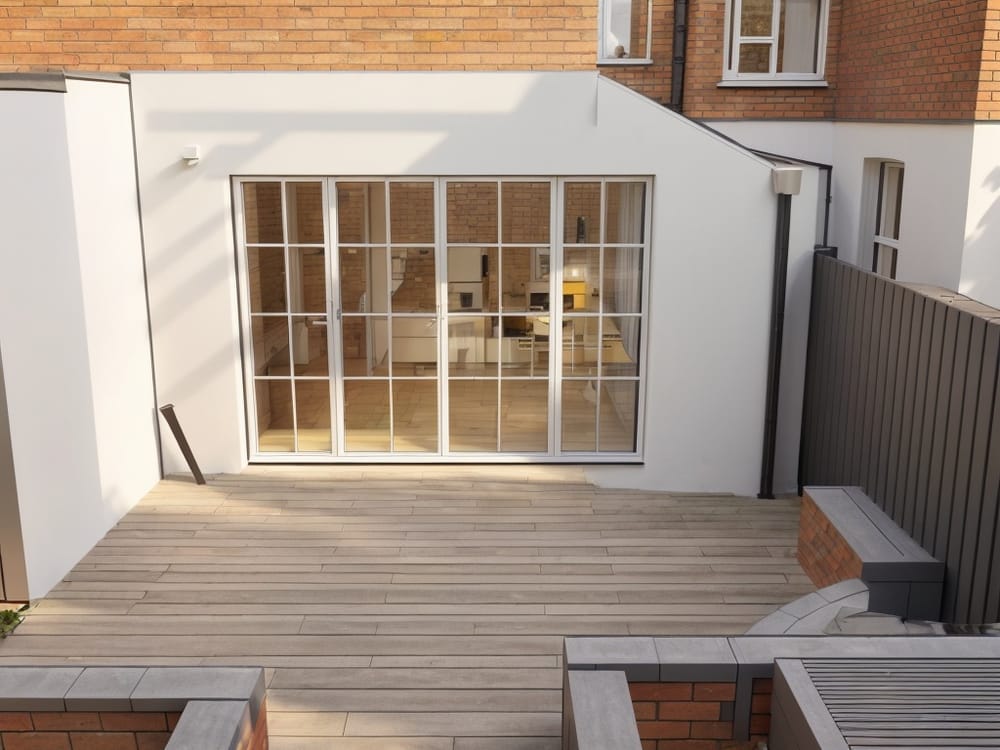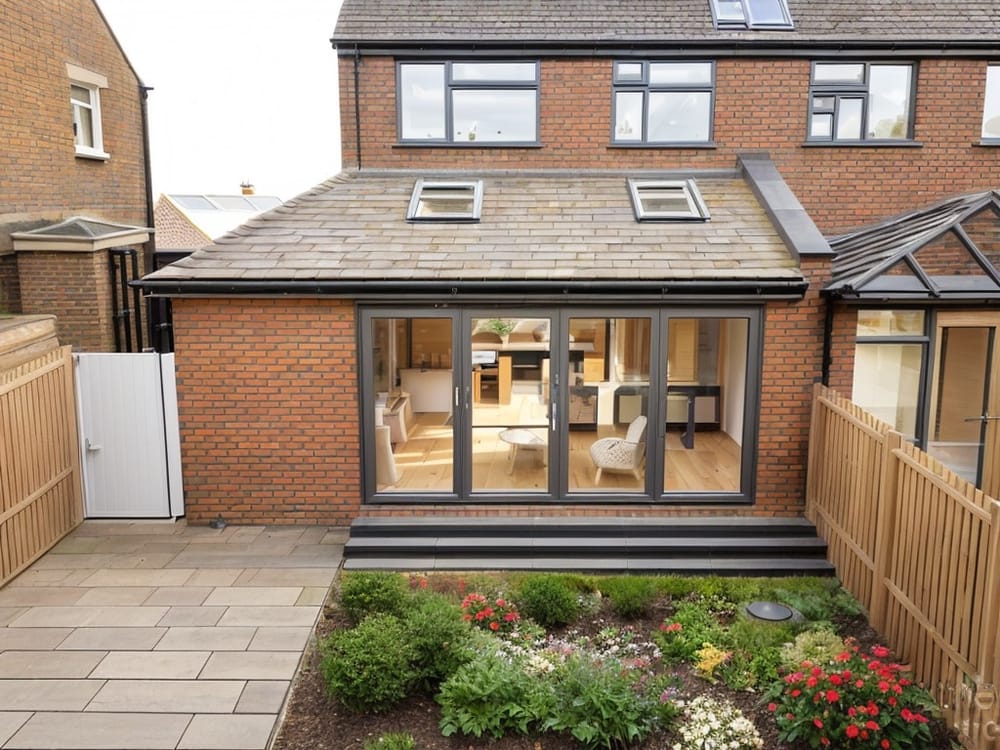Before your home improvement hopes and dreams become a reality, you need to secure the green light, thumbs up, and go ahead at various stages. Whether it’s surveying, architectural drawings, planning approval, building regulations or sourcing contractors, it’s hard to know when changes to your design can and can’t be made.
The stage that often causes the greatest amount of confusion is the one after planning approval. You’re likely sorting out your building regulations and gearing up to start construction, but wait a minute, wouldn’t that window look better over there? Maybe a sliding door would work instead of a bi-fold? Could the kitchen work better if it was further to the back?
To better understand what’s possible, we asked our architects to break down your post-planning options.
How much can I change plans after planning permission is granted?
If you’re dying to change up your project’s design, we’re afraid to say you’re limited. Councils generally don’t allow major design changes; however, they do allow room for alterations that fall under ‘non-material amendments.’
Small changes under this banner might include:
- Amendments to windows/doors/openings that don’t overlook neighbouring properties
- Reducing the size of your building/extension
- Changing your interior layout
- Adding a patio no higher than 30cm
It’s important to note there’s no statutory definition of what falls under this category, so it’s often up to your local authority to make a subjective decision.
To help offer some clarity, we recommend talking through potential changes with your case officer or asking your architect to do this on your behalf. However, before you go down official channels, ask your officer for informal advice on the likelihood of your proposed changes being approved.
If you do decide to go ahead with your alterations, you’ll need to make a formal ‘non-material amendment’ application, which will incur a small fee.
What are considered ‘non-material amendments’ under planning permission rules?
In short, non-material amendments are minor changes. They don’t significantly change what your planning permission originally granted, meaning you don’t need to submit further planning applications or obtain new planning permission for your revisions. However, if the revisions are considered ‘material,’ they won’t be accepted.
Can you add conditions to a non-material amendment?
Sadly not. Although section 96A allows changes to the permission that are ‘non-material,’ which includes adding new conditions and changing or deleting old ones, you’re limited in what you can do. Any ‘material’ condition changes you want to make will need to be made under section 73.
How do I submit a planning amendment?
To submit an application, you’ll need to apply via your local authority’s website. Different councils have different processes, so it’s worth asking your case worker to advise you on the best course of action. For example, some councils have portals to help you organise your changes and permissions, while others require you to submit your application via email or post.
For minor material amendments, you can make an application under section 73 of the Town and Country Planning Act 1990. This is to vary or remove the current conditions your planning permission has approved.
For larger amendments, whether in or out of your control, you need to apply for a new planning application under section 70 of the Town and Country Planning Act 1990.
Read this resource on the GOV.UK website for more information.

Changes you can’t make after planning permission
Wondering when amending planning permission outside of a non-material change is a straight-up no-go zone? Here’s what won’t be considered a part of your existing planning agreement.
- Increasing the size of your extension/building
- Significantly increasing the height of your eaves or roof
- Moving a building or extension, even if it’s within the same site area
- Changing the site area (red line)
- Changes in conflict with a specific condition
- A significant change in elevation (where the proposal would appear materially different to what’s permitted)
- Inserting a new feature (such as dormer windows, which could create an overlooking problem)
- Changes that alter the nature or description of the development
- Multiple minor changes
- New works or elements that weren’t part of the original application
A good rule of thumb is to remember the common reasons planning is refused in the first place. For example, not keeping your project within the scope of the rest of the house, overshadowing your neighbours, and having a negative impact on local wildlife. All these factors went into the original decision so need to be considered when making additions/alterations.
Learn more about why planning permission is refused.
Amending my planning permission isn’t possible, but I want to make those changes anyway
If the changes you want to make aren’t possible under your current application, you’ll need to reapply for permission. This might feel daunting, but with a good architect by your side, it’s a fairly painless process.
At Resi, even if you didn’t use us for your original designs, our team can map out your new ideas before packaging them up for reapplication. Our in-house planning agents will manage the submission on your behalf and ensure your new designs have the best chance of approval. What’s more, if you’ve already secured approval, your resubmission should exclude an application fee.
To learn more about Resi’s planning services, why not talk to our team? You can book a consultation any time and get personalised project advice, all free of charge. Book yours here.
FAQs
Can I change the internal layout after planning permission?
Most internal changes don’t need you to secure planning permission. This also includes removing an internal wall. However, listed buildings work a little differently and require you to seek approval from your local authority.
Can I change architect after planning permission?
You don’t need an architect to submit your planning application, although it helps to employ their expertise! They’ve done all this before so know how it works, how to optimise your chances of success, and how to resolve issues as they arise. However, if you’re dissatisfied with your architect for any reason, at any stage of the project, you’re able to ‘dis-instruct’ them and go elsewhere. Just make sure you check your contract before cutting ties. Most architects will include break clauses after each stage (planning, build-regs etc.) So, as long as you pay any fees you owe, walking away shouldn’t be a problem.
Can I build bigger than the planning permission?
In almost every case, building bigger than your planning permission granted is a no-no. If you’d like to change the design of your extension after planning permission approval, you’ll need to resubmit an application.
Can I build smaller than my planning permission?
As long as your extension remains within the perimeters of the original planning approval, reducing its size is fine. However, we always advise sticking to your original plans as closely as possible. Potentially nosy neighbours might make things difficult for you if they see you’ve changed your plans. Also, if you ever sell your house, potential buyers who don’t know anything about planning permission might question why your plans don’t match the extension you built.
What’s retrospective planning permission?
A risky move! Most people apply for retrospective planning permission after their project has been built. It costs the same as an advanced permission application (£206 for an extension) but runs the risk of being declined. If so, you’ll have to put everything back to how it was before. Unless you like to live dangerously and throw your money into the void for fun, we highly recommended you seek planning approval before starting any work. You risk fines and even a prison sentence if you refuse to put it back, although this is a worst-case scenario.
What is a revised planning application?
A revised planning application is required when you need to make significant changes to an already approved development. It’s worth noting that if you don’t seek this before undertaking the works, you may risk planning enforcement action, which will mean undoing all the changes you’ve made.
What happens if you deviate from your planning permission?
This is known as a planning breach, which is a potentially costly risk we highly recommend you avoid. If you don’t secure planning permission before you start building, you risk enforcement action, which requires you to undo any works you’ve completed and return your property to what it was before. If you don’t comply, you further risk court action and legal penalties.


